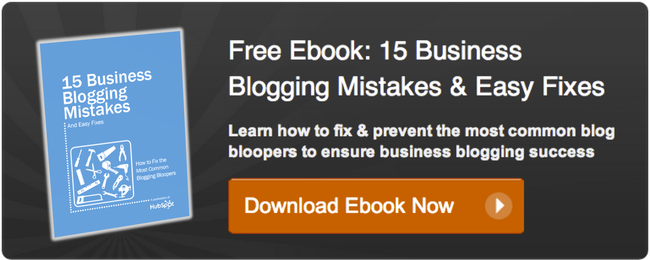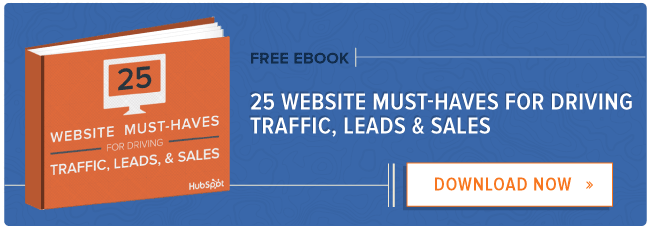19 Sure-Fire Ways to Amplify Your Social Reach
Marketers … we’re on the hook for lead gen. Marketers … we’re on the hook for using social media, too. Those two things ever seem at odds with one another?
Maybe. Because aside from just publishing more links to landing pages, the ways you can generate leads on social media sometimes seem a little lacking. But you can scale your social media lead generation if you do one thing extremely well: Grow your social media reach. Think about it. You can’t really do some crazy hacky stuff to generate more leads on a site over which you have no control, right? So exercise what you do have control over — the number of people who have an opportunity to convert on the lead generation content you publish to social media.
How do you do that? Why, I’m so glad you asked. This post will give you 19 solid tactics you should always be keeping in mind to grow your social reach. Take a look!
19 Tactics to Grow Your Social Reach
1) Put social sharing and follow buttons on all of your collateral.
Whether your marketing materials are online or offline — but really, the online ones are uber-critical — place social calls-to-action that let people know where they can find you on social media. Remember, you need social sharing buttons, and social follow buttons. This allows people to share your content, and/or opt in to follow you on social media themselves. Both are big wins for widening your social reach. Think everywhere from your home page and your blog posts, to your email marketing messages and printed collateral at trade shows. (Tip: Consider using QR codes to bridge the gap between print and digital when promoting your social media presences on printed materials.)
2) Make sure social share and follow buttons are visible on mobile versions of your site.
People are always using their mobile devices when checking out new and interesting companies. And they sure as sugar use ‘em to mess around on social media while they’re waiting for the bus. Chilling in line. Parked in their car. Sitting in the airport. You get the point. So it’s important your social follow and share buttons are easy to find on your marketing assets if they’re being accessed from a mobile device. It makes that next step to follow you or share your content much easier!
3) Tailor your content to the social network.
What you’re saying on Twitter should be short and sweet. Punchy. Easy to digest in a sentence. What you’re saying on Facebook? Well, you have more room to play around. It’s easier for people to see a visual than it is on Twitter — and same goes for Google+. LinkedIn, however, might benefit from a link to a more in-depth content asset, pulling in a snippet from the content itself. Every social network is a little bit different. Treat the content you post there accordingly so it resonates with that audiences, and is more likely to spread.
4) Tailor your content to the persona.
Just as your social networks have a personality, so do the people for whom you’re posting content. Consider the make-up of your audience — and remember that it may differ from network to network — to understand what content spreads the most. This is something you’ll get better at gauging over time. For instance, you might notice that your audience on Facebook loves when you share funny content about Topic X, but your LinkedIn audience engages more when you post educational content about Topic Y. Striking the right topic and tone for your content based on the audience’s persona will help you get your content shared with new audiences.
5) Respond frequently to your fans and followers.
One of the best ways to grow your audience is by fostering a chatty community. Why? Because the more your entire follower-base communicates publicly, the more exposure your social presence receives. Not only that, when you consider how Facebook’s EdgeRank algorithm works, the posts that receive the most engagement receive the most exposure in the News Feed. Post content people want to talk about, and foster the conversation with your own responses, too.
6) Interact and engage with people on social media that aren’t yet following you.
Engagement is the first step to building relationships with your network, but also with people you have not connected with yet. If you want to grow your reach, a natural introduction happens through engagement. That would mean retweeting someone new on Twitter, sharing another company’s great Facebook update, or engaging in a discussion in another person or company’s LinkedIn group.
7) Keep your social media profiles up to date.
When it looks like no one has touched your social profile in months — heck, even weeks or days — it’s not giving anyone a reason to follow you. Stay current, stay active, and most of all, mix it up a bit so people have a reason to come back! For instance, make yourself one of those companies who posts amazing cover photos on Facebook. You know, the kinds that your entire fan base looks forward to checking out. Keeping people on their toes not only helps prevent fan/follower churn, it gives new people a reason to both share and follow your profiles, too.
8) Target your audience through paid advertising.
Social networks have really upped their game of late with their paid advertising options. Facebook, in particular, has done a great job improving their segmentation capabilities so brands that have a little money to spend can increase their reach. If you have some budget — a little or a lot — consider running some paid ads that encourage more fans and followers. If you need help getting started, we have a free ebook that tells you everything you need to know about running paid ads on Facebook.
9) Consider the time of day you post on social media.
The time of day you post on social media totally affects engagement. And affected engagement — whether positively or negatively — means affected social reach. Figure out what times of day are best for your audience. If you need a starting point, reference The Science of Timing from HubSpot’s Dan Zarrella to get more information on when you should be posting.
10) Newsjack on social media.
Newsjacking refers to the practice of riding the popularity wave of a current event for some business gain. If something’s incredibly popular, be the first person to talk about it in social media. That positions you as the information source that people know they just have to follow if they want to stay in the know. At HubSpot, for instance, we use social media to push out breaking industry news, as well as funnier newsjacks, like our video parody of the Harlem Shake.
11) Adopt new social media “stuff” as it rolls out.
Pinterest. Vine. Facebook ads. These are social networks, apps, and features that have the potential to make social media marketing more effective. You might find that these new rollouts are a waste of time (if you have that hunch, here’s how to know for sure), and don’t really help you with your engagement, lead gen, or any other metrics. But you will probably find at least some of them are helpful. If you approach new social rollouts as an agile marketer, it doesn’t take a lot of resources to do a couple quick experiments to determine the viability of all the new “stuff.” If you run 5 little experiments, and only one totally rocks your world … that’s still one more tool that you didn’t have before.
12) Create visuals to use on your social media channels.
Visuals are extremely popular on social media, particularly Pinterest, Facebook, and Google+, that all have interfaces that support visual content consumption. In fact, Simply Measured reports that just one month after the introduction of Facebook Timeline, visual content saw a 65% increase in engagement. And as we know, increased engagement means increased visibility … in front of those people that don’t know who you are yet, and aren’t engaged with your brand on social media. Get comfortable getting visual, with memes, videos, infographics, cartoons, and any other images your creative brain can dream up.
13) Host Twitter chats.
Twitter suffers from a volume problem. There’s a lot of content coming from a lot of different places, and it’s hard to get heard or found amidst all that chaos. That’s why Twitter chats are a great tactic to increase your reach. Twitter chats have a specific hashtag associated with them that helps participants and other tweeters sort by topic; they’re digital events promoted on other, less cluttered channels; and the volume of tweets going out associated with your event hashtag help get you the visibility you need to surpass the volume “problem” on Twitter. If you’d like to hold your own Twitter chat, check out this blog post that walks you through it.
14) Create a hashtag for any event you host, and make sure all event attendees know about it.
Whether you have an event for 20 people or 2,000, it’s important to have a hashtag so your attendees can network with each other and promote your content. Attendees at events are one of the greatest ways to get a larger social media reach because they often tweet about events multiple times, simultaneously promoting the event and your company to their own followers. Plus, just like with Twitter chats, the volume of tweets helps you get some visibility in that cluttered Twitter stream.
15) Initiate a guest blogging program.
But wait. Isn’t this just helping our respective blogs? Well yes, it totally is, but it’s also getting your content — you know, the stuff that powers your social media presence — in front of another audience.
This means when you guest blog on another site, those readers are sharing that @YouAwesomeMarketerYou wrote this amazing blog post. (You’re @YouAwesomeMarketerYou in this example.) Now the audience of the site you wrote for is getting to know you, and when your guest blogging partner reciprocates, you can bet their audience will hear alllll about the blog post on @YouAwesomeMarketerYou’s website. See how that works?
16) Partner with other organizations to reach their social media list.
Just like guest blogging, when you partner up with another complementary organization — this is the practice of co-marketing — you can help each other widen your respective reaches. If growing your reach is a priority for any of your co-marketing partnerships, consider creating a content calendar of items a partner could promote on your behalf, that are also relevant to their audience, to help you grow your reach.
17) Host a contest or gamify your social presence to incentivize follows.
Often a little competition is just what people need to get interested in a brand on social media. Now, different social networks have different rules for hosting contests, so be sure you read the terms of service on each network thoroughly. (We’ve summed them up pretty well in this blog post, too.) But a free game or a contest — here are eight awesome ones you could run on Pinterest, for instance — are excellent tactics to increase your reach.
18) Post something new every day.
That may seem like quite the task, but there’s always something you can say, content you can create, and people you can engage with. You can’t rest on your laurels with social media. A big-hit post today means very little tomorrow. Keep your presence fresh, update multiple times daily, and do it across all your networks to keep your reach growing at all times.
19) Create high quality content.
This is what it all comes down to, really. The brands out there with amazing social reaches probably do a lot of the things in this post. But they all post extremely high quality content. And they do it all the time. No matter what tricks you have up your sleeve to juice your social reach — and hey, we totally support that extra credit stuff — make sure you start with high quality content first and foremost. That’s the stuff people want to consume themselves, and share with other people.
What other tactics have worked for you to increase your social media reach?
Image credit: crdotx












































































